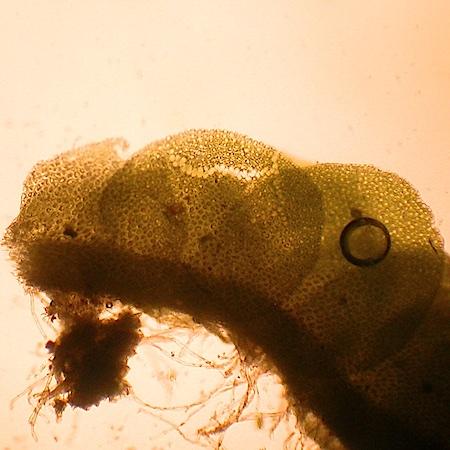
Syzygiella-concreta-A-B-Sterile-gametophyte-ventral-view-C-Ibid-dorsal-view-D_Q640.jpg from: https://www.researchgate.net/figure/Syzygiella-perfoliata-A-Sterile-gametophyte-lateral-view-B-Ibid-dorsal-view-C_fig2_256670454
Exploring the Fascinating World of Syzygiella Tonduzana Steph. Moss
Introduction
Mosses are some of the most ancient and resilient plants on Earth, having existed for over 400 million years. One particularly interesting species is

Syzygiella-teres-A-D-F-G-Dry-plants-E-Wet-plant-H-R-Leaves-S-Portion-of-stem.png from: https://www.researchgate.net/figure/Syzygiella-teres-A-D-F-G-Dry-plants-E-Wet-plant-H-R-Leaves-S-Portion-of-stem_fig1_333940131

Syzygiella-flaccida-Steph-Gradst-GELee-A-Part-of-plant-dorsal-view-B-Part-of.png from: https://www.researchgate.net/figure/Syzygiella-flaccida-Steph-Gradst-GELee-A-Part-of-plant-dorsal-view-B-Part-of_fig10_357780316
Syzygiella tonduzana Steph.

Syzygiella-renifolia-A-Habit-with-gynoecium-in-lateral-view-female-bracteole-not_Q640.jpg from: https://www.researchgate.net/publication/301199027_A_new_species_of_Syzygiella_subg_Cryptochila_Marchantiophyta_from_Brazil
, a moss in the Adelanthaceae family, also commonly known as just Syzygiella. In this blog post, we’ll dive into the unique characteristics and ecological importance of this tiny but mighty plant.
Background
Syzygiella tonduzana Steph. is a species of moss belonging to the Marchantiophyta division and Jungermanniopsida class. The Adelanthaceae family contains around 20 genera of liverworts and mosses found in tropical and subtropical regions worldwide. Syzygiella mosses are known for their distinctive branching patterns and leaf arrangements.
Morphology and Identification
S. tonduzana forms small, dense mats on tree bark, logs, and rocks in humid forests. The shoots are irregularly branched and only 1-2 cm long. Leaves are succubously inserted (the upper edge of each leaf overlaps the lower edge of the leaf above it), ovate in shape, and have smooth margins. Oil bodies are present in the leaf cells, appearing as tiny, round globules. The underleaves are small and bifid (divided into two lobes).
Global Distribution and Habitat
This moss is found in tropical and subtropical regions of the Americas, including Mexico, Central America, the Caribbean, and northern South America. It grows in humid montane forests

jamesoniella_autumnalis2.jpg from: http://www.luopioistenkasvisto.fi/Sivut/sammalet/kalliokaulussammal.html
at elevations between 500-3000 meters. S. tonduzana is epiphytic, meaning it grows on other plants (usually trees) without being parasitic.
Ecological Roles and Adaptations
Like other mosses, S. tonduzana plays important roles in its ecosystem:
- Helps retain moisture and prevent erosion

Syzygiella-ciliata-A-Habit-in-dorsal-view-B-Leaves-C-Leaf-apex-showing-teeth-D_Q640.jpg from: https://www.researchgate.net/figure/Syzygiella-ciliata-A-Habit-in-dorsal-view-B-Leaves-C-Leaf-apex-showing-teeth-D_fig3_264244100
- Provides habitat for micro-organisms and small invertebrates
- Contributes to nutrient cycling by trapping organic debris
S. tonduzana has several adaptations that allow it to thrive in its environment:

Figura-4-Cheilolejeunea-acutangula-Nees-Grolle-A-Gametofito-vista-ventral-B_Q640.jpg from: https://www.researchgate.net/figure/Figura-16-Cheilolejeunea-tonduzana-Steph-W-Ye-RL-Zhu-Gradst-A-Gametofito-em_fig12_319991927
- Poikilohydry – can tolerate desiccation and rehydrate when water is available again
- Efficient water and nutrient uptake through its entire surface
- Production of secondary compounds that may deter herbivores

Syzygiella-teres-A-D-F-G-Dry-plants-E-Wet-plant-H-R-Leaves-S-Portion-of-stem_Q320.jpg from: https://www.researchgate.net/figure/Syzygiella-teres-A-D-F-G-Dry-plants-E-Wet-plant-H-R-Leaves-S-Portion-of-stem_fig1_333981306
Conclusion

215137.jpg from: https://inpn.mnhn.fr/espece/cd_nom/770367
Syzygiella tonduzana Steph. may be small, but it is a fascinating and ecologically valuable member of humid tropical forest communities. Its ability to grow on other plants and survive periods of dryness demonstrate the incredible resilience of mosses. The next time you’re in a tropical forest, take a closer look – you might just spot a patch of Syzygiella making its quiet but important contribution to the ecosystem. What other secrets do you think these ancient plants hold?

SYZYGIELLA.jpg from: https://popmicrosoftnueva.blogspot.com/2020/01/jungermaniaceae-hojas-retusas-no.html